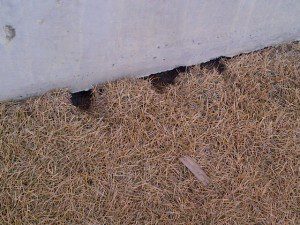Mastering Vole Parasite Control: Extensive Insights on Infestation Avoidance and Therapy Strategies
By acknowledging the subtle indications of vole problem early on, we can take proactive measures to avoid widespread damages. In this discussion, we will certainly check out the nuances of vole habits, dive right into the recognition of infestation indications, and uncover the most effective avoidance and therapy approaches.
Comprehending Vole Behavior
Taking a look at the foraging patterns of voles offers important understandings right into their habits and environment preferences. By observing their foraging habits, scientists can get a far better understanding of where voles like to develop their environments and the level of their environmental influence.
Research indicates that voles exhibit discerning feeding habits, choosing seeds, bulbs, and roots. This nutritional preference affects their foraging patterns, leading them to locations abundant in vegetation and ground cover. In addition, voles are recognized to develop intricate tunnel systems for foraging and nesting functions, indicating a high degree of flexibility to their environments.
Understanding vole behavior is essential for carrying out targeted insect control procedures that disrupt their habitat preferences and foraging tasks (vole pest control). By studying their actions, professionals can develop much more reliable avoidance and treatment techniques to manage vole infestations
Identifying Indications of Vole Infestation
Vole invasions can be identified by recognizing details indicators of their presence in a location. Among one of the most typical signs of a vole infestation is the existence of surface paths. Voles create networks of narrow paths on the ground that are usually around 2 inches vast. These paths are commonly discovered in verdant areas or beneath mulch or ground cover where voles can relocate openly and look for food.
An additional essential indication of vole problem is the existence of little burrow openings in the ground. In addition, voles are recognized to leave behind chewed plant stems, origins, and light bulbs near their burrow openings, suggesting their feeding activity in the area.
In addition, vole droppings can likewise indicate their existence. Vole droppings are little, brownish, and round in form, resembling grains of rice. Discovering these droppings along paths or near burrow openings can verify a vole invasion. By being cautious for these indications, residential property owners can immediately address vole problems and stop more damage.
Applying Aggressive Avoidance Actions

Moreover, employing natural vole deterrents like castor oil-based repellents or predator pee can serve as efficient safety nets. It is also recommended to routinely check exterior spaces for any type of indications of vole task, such as runways or burrow openings, to deal with prospective problems without delay. vole yard damage. By taking on these proactive prevention strategies, home owners can considerably decrease the probability of vole damage and keep the health and appearances of their landscapes
Efficient Therapy Approaches
Incorporating targeted capturing methods and using approved rodenticides are essential elements of reliable treatment approaches for taking care find this of vole infestations. Capturing can be an effective way to lower vole populaces, especially when placed tactically in their active runways. Break traps and live catches can both be effective, with the last enabling the capture and moving of voles. When making use of rodenticides, it is crucial to adhere to safety and security guidelines to protect against injury to non-target animals and animals. Area rodenticides in secure bait terminals to minimize risks to unplanned targets. Additionally, habitat adjustment, such as reducing ground cover and removing resources of food, can aid deter voles from infesting a location. Routine monitoring and upkeep are likewise vital elements of effective therapy methods to guarantee that vole populaces are maintained under control. By combining trapping, rodenticides, habitat modification, and constant surveillance, efficient vole bug control can be accomplished.
Surveillance and Maintenance Tips
Normal surveillance permits for the early discovery of vole task, making it possible for prompt intervention before infestations worsen. To effectively keep an eye on vole populaces, strategically put traps can be used in vole runways or near burrow entrances.
Additionally, maintaining a clean and tidy landscape is crucial in vole prevention. Clearing away particles, such as stacks of timber or thick plants, gets rid of this potential vole habitats. Consistently mowing lawns and trimming plants aids lower vole hiding spots and reduces their access to food resources.
Furthermore, continuous maintenance of physical barriers, such as fences or cord mesh, is essential to stop vole intrusion. Evaluating and repairing any damages to these structures makes certain that vole control continues to be efficient in guarding buildings from problems. By including these tracking and upkeep practices right into a detailed vole pest control plan, people can successfully handle vole populaces and shield their homes from damages.
Conclusion
In final thought, mastering vole pest control calls for a solid understanding of vole actions, the capability to determine indicators of invasion, implementing aggressive prevention actions, efficient therapy techniques, and constant monitoring and upkeep. By taking an extensive technique to vole control, individuals can properly take care of and protect against invasions, inevitably safeguarding their residential property and surrounding environment from damage triggered by these tiny rats.
In this conversation, we will explore the subtleties of vole actions, dive right into the recognition of invasion indicators, and reveal the most efficient avoidance and therapy techniques.Including targeted trapping techniques and using approved rodenticides are necessary components of effective therapy approaches for handling vole invasions. To effectively monitor vole populations, tactically placed catches can be made use of in vole runways or near burrow entryways. Checking and fixing any problems to these structures makes certain that vole control directory continues to be effective in safeguarding homes from invasions. By incorporating these surveillance and upkeep practices right into an extensive vole bug control strategy, people can efficiently handle vole populaces and protect their homes from damage.
Comments on “Recognizing Vole Lawn Damage and Exactly How to Fight It”